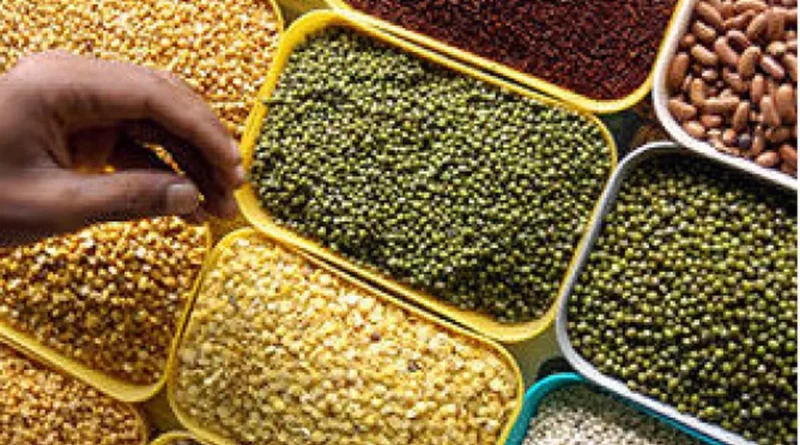Century-low monsoon hits kharif sowing, pulses register sharp fall
By Pallavi Singhal
A century-low monsoon in August has adversely impacted Kharif crop sowing, data released by the Ministry of Agriculture has shown.
The total sown area of pulses was down 8.48 percent as of September 1, year on year (YoY). The total area of pulse cultivation had been lowered by over 11 percent last year at this date, according to the data.
The monsoon this year has played truant and after a registering an excess 13 percent rainfall in the month of July, has dropped off in August with the overall cumulative deficit now being at around 10 percent of the long period average (LPA).
The delayed sowing of arhar, urad, and moong are responsible for the reduction in the area under pulse cultivation. While sown area for arhar is down 5.76 percent, for urad and moong it is down 13.5 and 7.7 percent, respectively.
Arhar has seen a steep spike in retail prices of late. As per the data available on the Department of Consumer Affairs website, there has been a 32 percent rise in its prices on-year. Urad and tur together account for two-thirds of the kharif pulses basket.
The sowing of cotton is also down by over 2 percent this year, with its acreage falling from 125.64 lakh hectare last year to 123 lakh hectare this year.
Meanwhile, sowing of paddy has continued apace, registering an increase of 3.7 percent as on September 1. Its sown area has increased from 383 lakh hectare on the same date last year to 398 lakh hectare now.
What has posed to be a concern is that though rice stocks are comfortably above buffer norms, they are still the lowest in past 5 years.
The Centre has tried to ensure that supplies remain comfortable by invoking a series of measures so more rice rice is not exported out of the country as global prices soar. These include imposing a ban on export of non-basmati white rice from July 20 onwards, not allowing exports of basmati rice below the value of $1,200 per tonne and imposing a 20 percent export duty on parboiled rice.
While a pickup in rice sowing during the month of July may be a hint towards rice output seeing a marginal rise this year, production of pulses is estimated to fall with any drastic changes unlikely as the sowing for autumn crops nearing end. In case of oilseeds and cash crops such as sugarcane, production is estimated to be only slightly higher than last year, latest sowing data showed.
The erratic monsoon has ensured deficient rainfall for atleast 10 divisions so far with spatial distribution, which has further led experts to predict lower outputs. ‘Heavy rains in July have been followed by arid conditions in Aug, and hence the crop prospects could have been affected,” an analysis report by Bank of Baroda issued September 1 has read.
Bank of Baroda has projected rice cultivation to increase by 2.4-3.8 percent over last year, while estimating a double digit fall of 12 percent for pulses.
The kharif crop on a whole was only up by 0.4 percent as compared to last year.
Reservoir levels at historic low
Reservoir levels are standing at a historic low at 63 percent, while also registering a marginal decline over the past week. As of August 31, storage in key reservoirs stood at 63 percent, versus 64 percent the previous week. “This is also lower than last year’s level at this stage of the monsoon season (77 percent of available capacity), as well as lower than the historical average for this point in the season (current levels are 91 percent of the 10-year average),” a Barclays assessment showed.
Reservoir storage is of importance as the availability of irrigation sources will now be crucial for supplementing the sub-optimal rainfall.
“This is a bigger concern, as low reservoir levels will impact both industrial activity and winter crops, which depend more on standing water reservoirs, and creates greater price uncertainty,” the Barclays assessment has added.
This article has been republished from Moneycontrol

